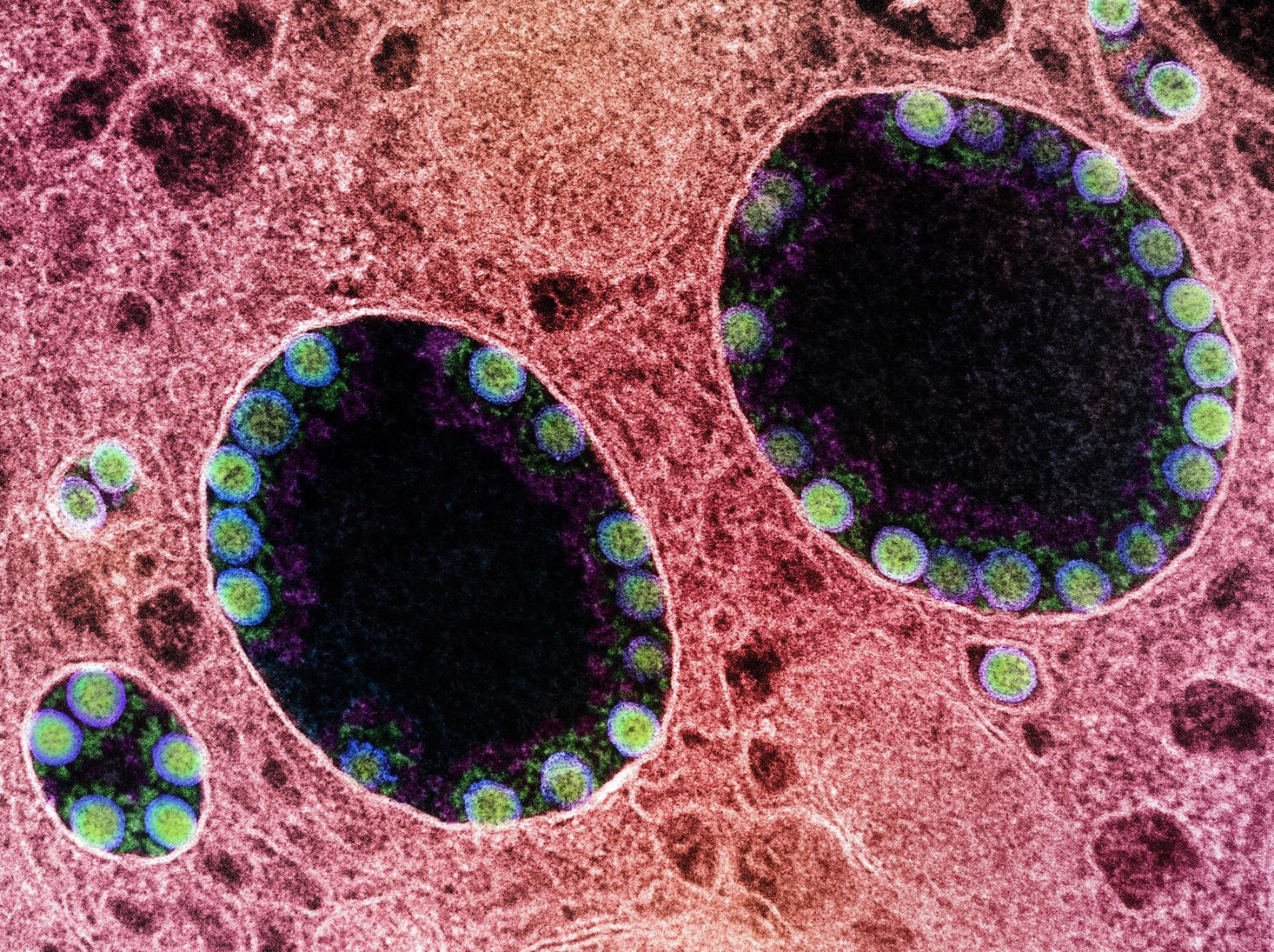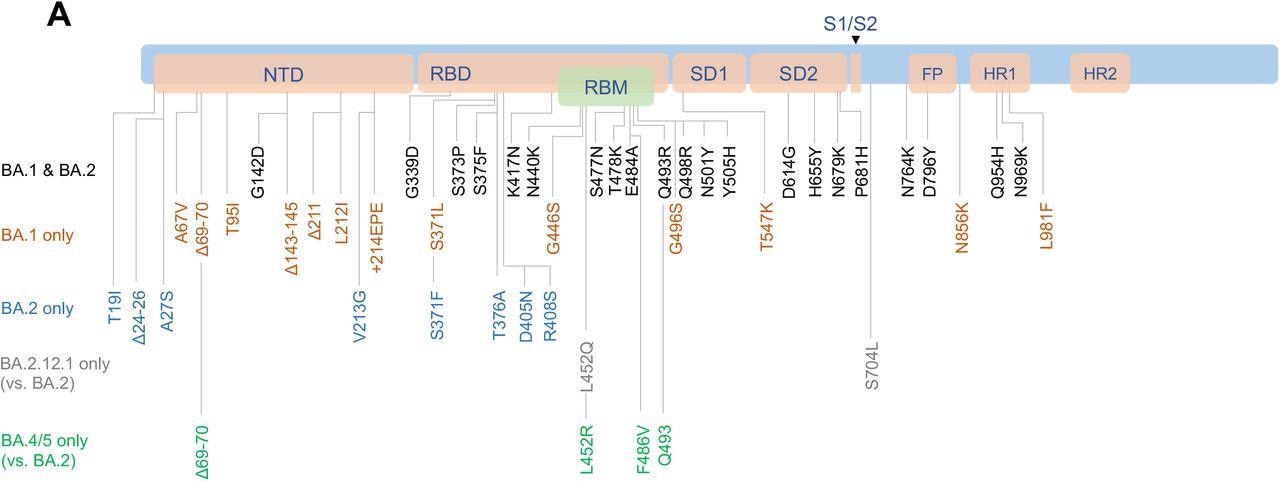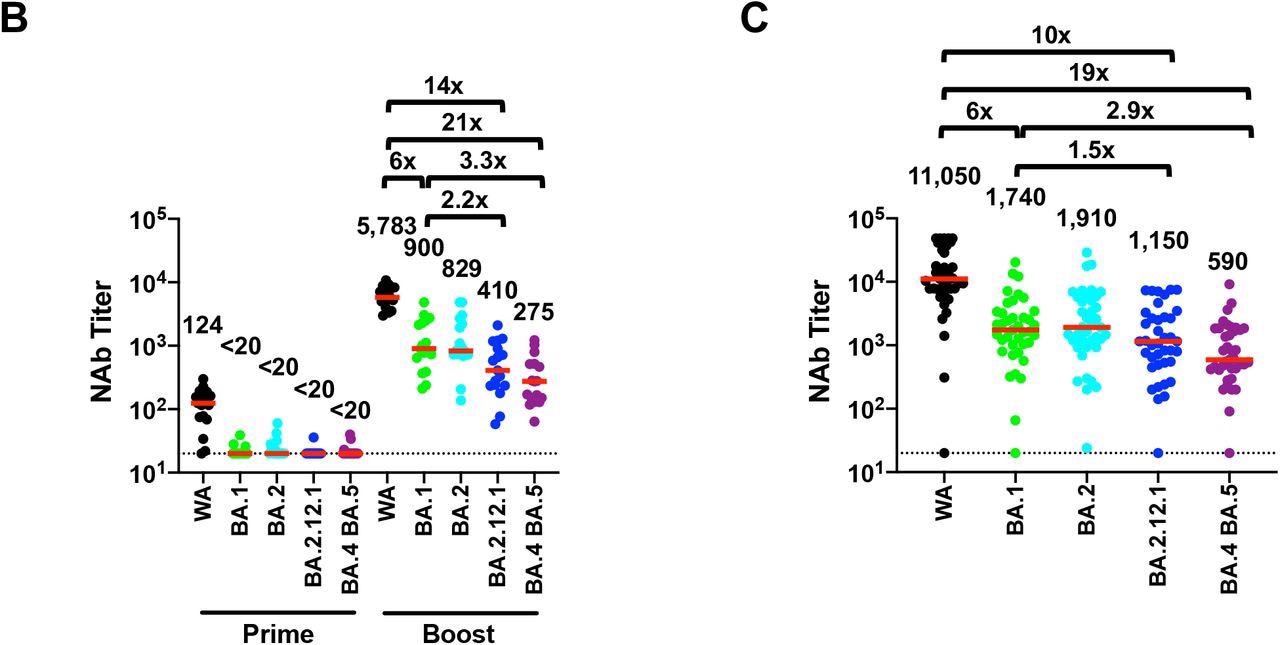In a recent study posted to the medRxiv* preprint server, researchers evaluated the neutralization evasion of the severe acute respiratory syndrome coronavirus 2 (SARS-CoV-2) Omicron sublineages.
 Study: Neutralization Escape by the SARS-CoV-2 Omicron Variants BA.2.12.1 and BA.4/BA.5. Image Credit: NIAID
Study: Neutralization Escape by the SARS-CoV-2 Omicron Variants BA.2.12.1 and BA.4/BA.5. Image Credit: NIAID
Background
Recently, during the coronavirus disease 2019 (COVID-19) pandemic, multiple SARS-CoV-2 Omicron (B.1.1.529) lineages have emerged, with BA.2 and BA.1 demonstrating significant resistance to neutralizing antibodies (NAbs). Currently, in the United States (US), the Omicron BA.2.12.1 variant has become dominant, whereas BA.4 and BA.5 were dominant in South Africa. Interestingly, the spike (S) protein sequences of the Omicron BA.5 and BA.4 sublineages are similar. However, the capacity of the SARS-CoV-2 Omicron BA.2.12.1, BA.4, and BA.5 variants to avoid NAbs generated by COVID-19 or its vaccination have yet to be described.
About the study
In the present study, the researchers analyzed the NAb titers of the SARS-CoV-2 WA1/2020, Omicron BA.2, BA.1, BA.4, BA.5, and BA.2.12.1 variants in two sets of cohorts. The study cohorts were 1) 27 COVID-19 messenger ribonucleic acid (mRNA) BNT162b2 vaccine two-dose dose and booster vaccinated individuals and 2) 27 Omicron BA.2/BA.1-infected subjects.
Individuals with a history of COVID-19, a SARS-CoV-2 nucleocapsid (N)-positive serology, recipients of other COVID-19 vaccinations, or taking immunosuppressive drugs were excluded from the vaccine cohort. Additionally, all but one person in the Omicron infection cohort was COVID-19 vaccinated. Further, the samples were collected about 29 days after SARS-CoV-2 diagnosis.
Results and conclusions
According to the study results, six months following two-dose BNT162b2 vaccinations, median pseudovirus NAb titers against the SARS-CoV-2 WA1/2020 strain was 124 but less than 20 to all Omicron sublineages. The median NAb levels elevated drastically to 275, 410, 829, 900, and 5,783 to the Omicron BA.4/BA.5, BA.2.12.1, BA.2, BA.1 variants, and WA1/2020 strain, respectively, two weeks after the booster dose. These data imply the median NAb levels of BA.4/BA.5, BA.2.12.1, BA.2, and BA.1 had a 21.0-, 14.1-, 7.0-, and 6.4-fold drop, respectively, relative to WA1/2020. Further, the median NAb concentrations of BA.2.12.1 and BA.4/BA.5 were 2.2- and 3.3-time, respectively, lower than BA.1.

Neutralizing antibody responses to Omicron subvariants. A. Cartoon showing BA.1, BA.2, BA.2.12.1, BA.4, and BA.5 mutations in the SARS-CoV-2 Spike. BA.4 and BA.5 have identical Spike sequences. NTD, N-terminal domain; RBD, receptor-binding domain; RBM, receptor binding motif; SD1, subdomain 1; SD2, subdomain 2; FP, fusion peptide; HR1, heptad repeat 1; HR2, heptad repeat 2
In the Omicron infection group, median NAb levels were 590, 1,150, 1,910, 1,740, and 11,050 to Omicron BA.4/BA.5, BA.2.12.1, BA.2, BA.1 subvariants, and WA1/2020 strain, respectively. These results indicate an 18.7-, 9.6-, 5.8-, and 6.4-time decline in median NAb concentrations of BA.4/BA.5, BA.2.12.1, BA.2, and BA.1, respectively, relative to WA1/2020. Besides, the median NAb concentrations of BA.4/BA.5 and BA.2.12.1 were 2.9- and 1.5-time lower than BA.1.

Neutralizing antibody responses to Omicron subvariants. Neutralizing antibody (NAb) titers by a luciferase-based pseudovirus neutralization assay in individuals six months following initial BNT162b2 vaccination (Prime) and two weeks following BNT162b2 boost (Boost). C. NAb titers in individuals following infection with BA.1 or BA.2. All were vaccinated except for the one individual with negative NAb titers. NAb responses were measured against the SARS-CoV-2 WA1/2020, Omicron BA.1, BA.2, BA.2.12.1, and BA.4/BA.5 variants. Medians (red bars) are depicted and shown numerically with fold differences.
Overall, the study findings showed that the Omicron BA.2.12.1, BA.5, and BA.4 variants notably evade NAbs elicited by SARS-CoV-2 infection and vaccination. In addition, BA.5/BA.4 NAb concentrations, and to a minor degree BA.2.12.1 NAb levels, were lower than BA.2 and BA.1 NAb titers, implying that the SARS-CoV-2 Omicron variant evolved with significant neutralization escape traits. These data have immense public health relevance and offer immunologic insights for the current BA.2.12.1, BA.5, and BA.4 outbreaks in areas with high SARS-CoV-2 vaccination rates and BA.2/BA.1 infection.
*Important notice
medRxiv publishes preliminary scientific reports that are not peer-reviewed and, therefore, should not be regarded as conclusive, guide clinical practice/health-related behavior, or treated as established information.
- Neutralization Escape by the SARS-CoV-2 Omicron Variants BA.2.12.1 and BA.4/BA.5; Nicole Hachmann, Jessica Miller, Ai-ris Collier, John Ventura, Jingyou Yu, Marjorie Rowe, Esther Bondzie, Olivia Powers, Nehalee Surve, Kevin Hall, Dan H. Barouch. medRxiv preprint 2022, DOI: https://doi.org/10.1101/2022.05.16.22275151, https://www.medrxiv.org/content/10.1101/2022.05.16.22275151v1
Posted in: Medical Research News | Disease/Infection News
Tags: Antibodies, Antibody, Assay, Coronavirus, Coronavirus Disease COVID-19, covid-19, Drugs, immunity, Luciferase, Omicron, Pandemic, Protein, Pseudovirus, Public Health, Receptor, Respiratory, Ribonucleic Acid, SARS-CoV-2, Serology, Severe Acute Respiratory, Severe Acute Respiratory Syndrome, Syndrome, Vaccine

Written by
Pooja Toshniwal Paharia
Dr. based clinical-radiological diagnosis and management of oral lesions and conditions and associated maxillofacial disorders.
Source: Read Full Article